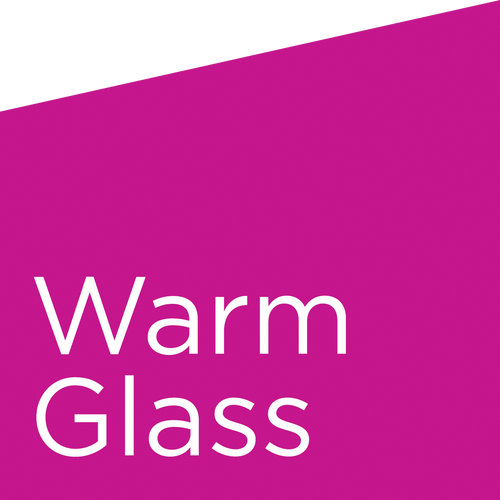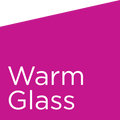Glass Fusing Glossary (A-Z)

Glass Fusing Glossary (A-Z)
6mm Rule
When heated to full fusing temperatures, glass naturally wants to assume a thickness of 6mm. This means that if your piece is thinner than 6mm, it will 'suck in' from the sides, so that the middle of the piece is 6mm thick. On the other hand, if your piece is thicker than 6mm when it is put in the kiln it will spread out when fired, to reach the optimal 6mm thickness. To combat this problem always make sure that your piece is always 6mm thick to start with by stacking 2 layers of 3mm glass, or 3 layers of 2mm.
As Fast As Possible. Used for describing the desired rate of heating or cooling in a firing schedule.
A binder is an important ingredient used when making your own mould mixture (or Investment), as well as serving other purposes. It unites all the different ingredients, primarily encouraging adhesion and cohesion of particles within the mixture.
An adapted firing schedule used for pieces that are at risk of trapping large air bubbles. A hold at 677°C allows air to be squeezed out from between layers of glass.
The process in which glass objects, usually 3-dimensional and solid, are created by filling a mould with crushed glass, then heating until the glass is molten so it fully takes the shape of the mould. This method is often used to make glass replicas of 3D objects, as the original object is not damaged in the mould-making process. Lost Wax and Pâte-de-Verre are both examples of casting, with very different results.
CoE – Coefficient of expansion
Coefficient of expansion (CoE) is the rate at which a material expands when heated. For kilnformed glass artists, the CoE is shorthand for describing glasses that are compatible with each other. For example, Spectrum's System 96 glass (as well as compatible glass that is manufactured by Uroburos) is often described as simply "96 glass". Similarly, Bullseye's compatible glass is frequently referred to as "90 glass". See also Compatibility.
Cold Working
Any cutting, grinding or polishing of glass is known as cold-working. It is called "cold" to distinguish it from techniques in which the glass is formed with heat. Common cold-working methods include sandblasting, bevelling, sanding, engraving and acid etching.
Glass that can be fused together without excessive residual stress is considered compatible. See also CoE.
Devitrification
A white, frosty or matte surface on glass that can appear after fusing. Often described as "scum" and referred to as "devit". Glass molecules are normally arranged randomly. Devitrification (literally "to become unglass-like") is the organization - or crystallization - of glass molecules.

When firing a piece of glass art, it is important to use the correct firing schedule to ensure that your piece is fired correctly. This schedule is programmed into the kiln and determines the ramp, the top temperature and the hold/soak period, all of which affect how the piece turns out. Different techniques require different firing schedules, as do different kilns.

Maintaining the temperature in a firing for a select amount of time. This is important as it unifies the temperature of the whole piece, minimising any stress on the glass and therefore reducing the risk of cracking.
Inclusions are any item that can be fused between layers of glass. These include metal foils, Glassline paper and Mica powder.
An investment is another name for a mould mixture, usually created to specific recipe. All investment moulds are composed of three basic ingredients: a binder, a refractory and modifiers.
A modifier is added to a mould mixture (or Investment) to change its characteristics, depending what properties the mould mixture is required to have. Different modifiers are available which all serve different purposes, including reducing the weight of a mould, making a mould stronger or allowing water to drain.
Pâte-de-Verre is a kilncasting method that literally means ‘paste of glass’. It involves mixing frit granules with a binder, applying this mixture to the inside of a negative mould and firing, which results in an interesting and unique piece of work.
The rate of heating or cooling in a kiln, measured in degrees per hour.

A refractory is an important ingredient used when making your own mould mixture (or Investment). It is a material that is difficult to melt or change, can withstand high temperatures, and is used as a strengthener and base for the mixture.
The hues of 'shift' colours change depending on the thickness and/or lighting of the piece: natural, incandescent, or fluorescent. The same piece can appear as a completely different colour as the light changes through the day, lending an ethereal quality to a piece. The difference is more pronounced the thicker the piece, making it ideal for cast glass objects. 
To heat glass sufficiently so that the glass bends under its own weight, taking the shape of the mould on which it rests.
Internal force or tension within a piece of solid glass. Stress can be caused by glass incompatibility or improper annealing.

Suckers are unsightly depressions or wrinkles that can appear when casting. They are caused by differences in temperature during the cooling process, as thinner areas will cool more quickly than the rest of the piece. To prevent suckers, keep your glass at a uniform temperature during cooling by soaking/holding the glass at 677°C to thoroughly unify the temperature, then cooling gradually to the annealing phase.
Tack fusing is a fusing technique in which the pieces of glass are heated until they are just hot enough to stick together and retain many of their original characteristics.

Top Temperature – Process Temperature
The hottest temperature in a firing schedule. The temperature at which the glass is melting to achieve your desired look.
Warm glass is the technical term for the working of glass by heating in a kiln. It is referred to as 'warm', as the glass does not reach temperatures as high as 'hot' glass work. In warm glass work, the piece is manipulated and arranged when the glass is cold, and then the piece is fired in a kiln, as opposed to in hot glass work where the glass is manipulated at very high temperatures. Warm glass mostly consists of fusing, slumping and casting.

